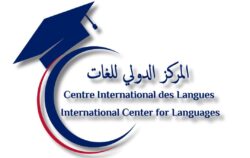To meet the diverse needs of learners, the International Language Center (CIDL) adopts a combination of teaching methods and modalities.
Here are some of the teaching methods often used at CIDL:
1. Communicative approach:
o Description: This method focuses on the practical use of the language, encouraging learners to interact realistically in a variety of situations.
o Advantages: It develops oral skills and self-confidence. Learners acquire a more natural understanding of the language in social and professional contexts.
2. Language immersion:
o Description: Classes are taught entirely in the target language, even for beginners, to promote total immersion.
o Advantages: Learners get used to thinking and expressing themselves directly in the target language, which accelerates their mastery.
3. Action-oriented method:
o Description: Inspired by the CEFR, this method focuses on practical tasks and projects that learners might encounter in everyday or professional life.
o Advantages: It allows learners to develop concrete skills and feel more autonomous. This approach is particularly useful for adult learners with professional needs.
4. Blended Learning:
o Description: A combination of face-to-face and online courses, offering classroom sessions with independent work, interactive exercises, and multimedia content.
o Advantages: Flexibility and the ability to personalize learning. Learners can access resources and content at their own pace and at their own convenience.
5. Online and Distance Learning:
o Description: Courses are entirely online, allowing learners to study from anywhere, often via interactive platforms.
o Advantages: Accessibility and adaptability for remote learners. Modern platforms allow for real-time interactive exchanges, and recordings can be used for review.
6. Project-Based Learning:
o Description: Learners work on real or simulated projects (e.g., creating a presentation, a report, etc.) that require the use of the target language.
o Advantages: This approach makes learning more meaningful and motivates learners to develop specific skills while practicing in real-world situations.
7. Cultural and Thematic Immersion Workshops:
o Description: Integrating courses that include cultural aspects such as cooking, music, or cinema into the target language.
o Advantages: Enriches learning by providing a cultural context that helps understand the nuances of the language. These workshops also stimulate learners’ interest in the culture.
8. Conversation Groups and Language Exchanges:
o Description: Small group conversation sessions or pairings with native speakers to practice in a friendly setting.
o Advantages: Improves interaction skills and provides a natural setting for practice. Language exchanges also promote cultural exchange.
9. Specialized Modules (Business Language, Technical Language, etc.):
o Description: Courses designed for specific needs such as Business English, Legal French, or Medical Spanish.
o Advantages: Ideal for professionals who have specific objectives. This makes learning relevant and aligned with the needs of the job market.
10. Continuous monitoring and evaluation:
o Description: Regular assessment of progress and personalized feedback to adjust learning according to the strengths and weaknesses of the learners.
o Advantages: This modality ensures that each learner evolves in a balanced way, while making adjustments if necessary.
